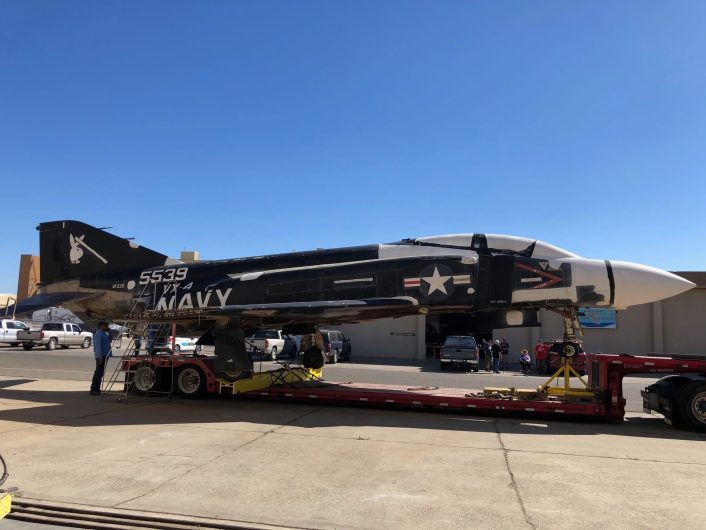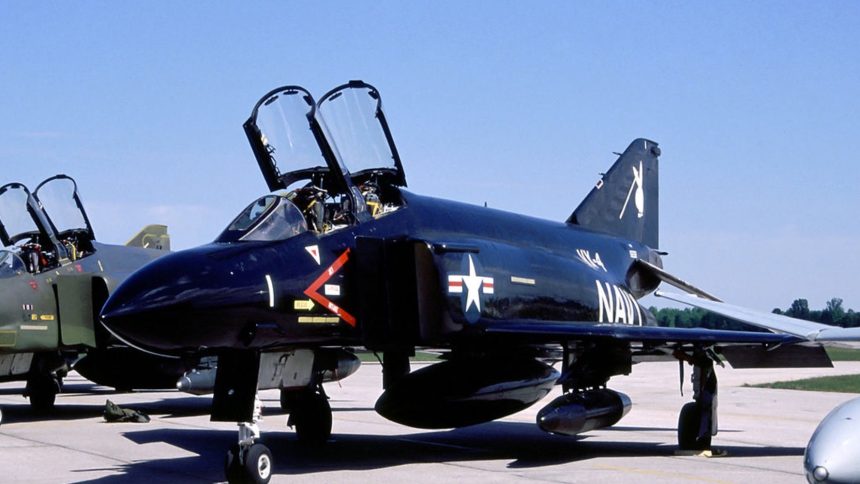Painted in distinctive black schemes with a Playboy Bunny adorning the tail, mimicking an aircraft of the prominent enterprise, these aircraft were flown by the United States Navy for evaluation purposes.
Bunny Beginnings
In the 1950s some aircraft of the United States Navy and Marine Corps began wearing bunny designs on the tail of their aircraft. It became a tradition of Naval Aviation. Marine Squadron VMCJ-2, known as “The Playboys,” was the first documented usage of a rabbit head on the tails of their aircraft. The United States Air Force also got into the act, placing the distinctive image on the tail of an SR-71 Blackbird, known as “Rapid Rabbit.”
Perhaps the most well-known aircraft examples sporting a bunny image belonged to the Navy’s Air Test and Evaluation Squadron Four, or VX-4. Based out of NAS (Naval Air Station) Point Mugu, California, the squadron tested advanced aircraft systems and were known as “The Evaluators.” The first rabbit appeared with this group in 1969, when it was placed on the tail of a black F-4 Phantom II used during night testing.
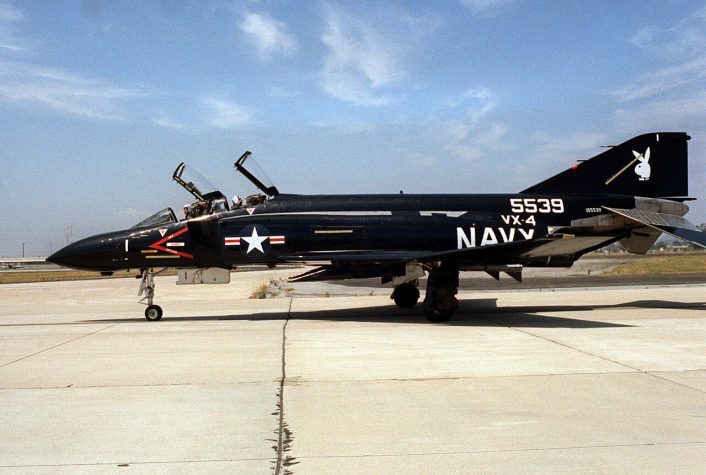
Big Bunny
In 1969 Playboy Enterprises acquired a Douglas DC-9 passenger plane. Sleek and all black with a Playboy Bunny emblazoned on the tail, the aircraft was known as “Big Bunny”. “Big Bunny” had a custom interior installed, complete with full bathrooms with showers, a theater, lounges, and a large rounded waterbed. Multiple televisions and an 8-track surround sound system rounded out the party atmosphere, along with a lighting system described as a “disco in the sky.”
The aircraft also included many other features advanced for the times, such as windows that could go black with the push of a button, and a communication system that allowed Hugh Hefner to make phone calls while flying. It even had a special flight crew known as “Jet Bunnies.” The exterior’s glossy black paint job required special approval of the FAA (Federal Aviation Administration). Spotlights on the tail illuminated the bunny emblem when making grand entrances.
Over the years the aircraft not only moved Hefner and his female entourage around the world, but other famous celebrities and guests as well. Some like Elvis and Sonny and Cher used “Big Bunny” for international tours. It was also used to fly orphaned babies of the Vietnam War to New York City for adoption. The DC-9 was eventually sold to Venezuelan Airlines and then acquired by Aeroméxico and used as an airliner. In 2004 it was retired and partially parted out, with the fuselage still used for training.
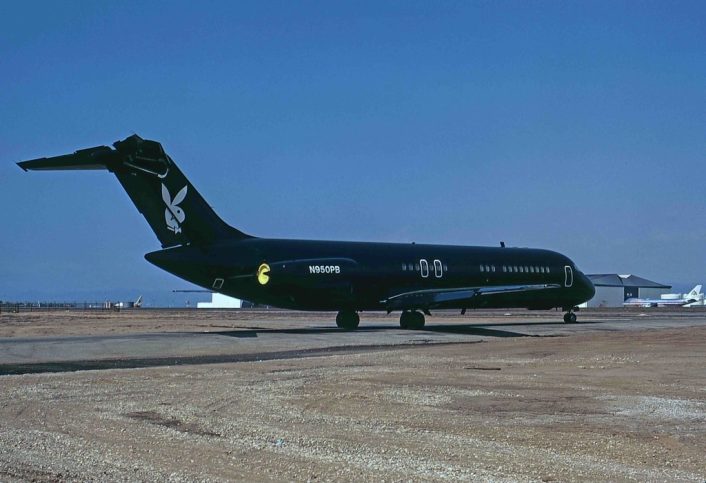
Black Bunnies
The McDonnell Douglas F-4 Phantom II was the first aircraft of VX-4 to receive the all black paint job and the well-known white bunny on the tail in 1969. Known as call sign “Vanderbilt 1,” or “Vandy 1”, it was flown by the commander of VX-4. VX-4 tested and evaluated missiles, radar systems, navigation systems, and other aircraft and weapon systems.
In 1971, an image of the F-4J “Black Bunny” circulated, prompting a letter to be sent to the squadron by Playboy Enterprises, warning of possible legal action for use of the bunny image. Playboy, however, did allow the image to be used as long as the Navy agreed to use an official Playboy stencil to paint the bunny. No legal action would be taken and official stencils were delivered to the squadron from Playboy.
In total, one F-4J and three F-4S models would carry the distinctive gloss black overall paint scheme with the famous bunny on the tail. The F-4 flew with VX-4 until January 1990. The J model (153783) was transferred to the Royal Air Force (RAF). Phantom 153783 would gain notoriety for a well-circulated photo of it in “Black Bunny” colors flying alongside an SR-71 (17955), with the “Skunk Works” logo displayed on its tail.
In 1985, a pair of F-14A Tomcats was assigned to VX-4 and given the same all black paint as well as the bunny on the tails, albeit in water-based paint. In 1990, the “Black Bunnies” flew F-14As with permanent paint applied.
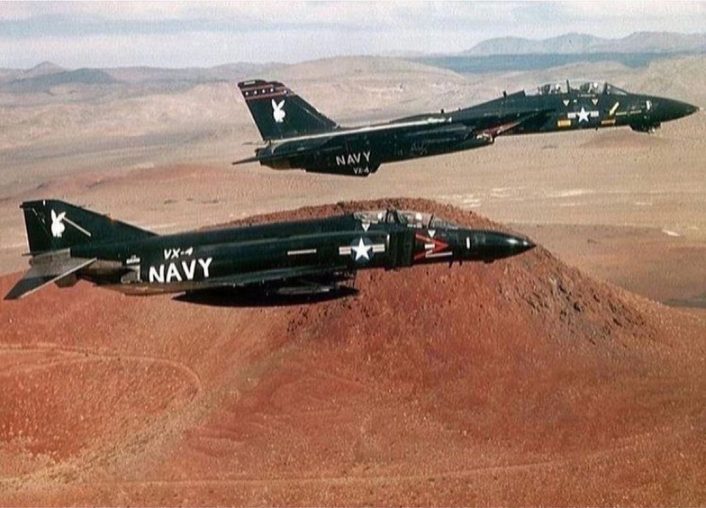
In 1994, VX-4 was combined with China Lake’s VX-5 “Vampires”, becoming known as VX-9. The F-14s would no longer sport the bunny, it being a victim of political correctness. At the retirement of the F-14 from service in 2004, the last Tomcat ever built (164604) was assigned to VX-9, and was painted all black with the bunny back on the tails for the aircraft’s final flights before being placed on gate guard duty at Naval Air Station Oceana, Virginia. However, it no longer wears the “Black Bunny” livery.
At one point in 2004 an all grey Boeing (formerly McDonnell Douglas) F/A-18E flying with VX-9 flew with black vertical stabilizers and the bunny on the inner surfaces. In 2023, an F/A-18 Super Hornet was painted with the overall gloss black to commemorate the 30th anniversary of the formation of VX-9 from combining VX-4 and VX-5. However the bunny was absent on the tails, instead sporting a white rendition of the VX-9 “Vampires” logo.
Recently, a former Ukrainian Aero L-39C Albatros (N55107) donned the “Black Bunny” colors of “Vandy 1,” flying in airshows under civilian ownership. The L-39 flies with the Warrior Flight Team, a charity assisting disabled veterans in the United States with scholarships and other career opportunities.
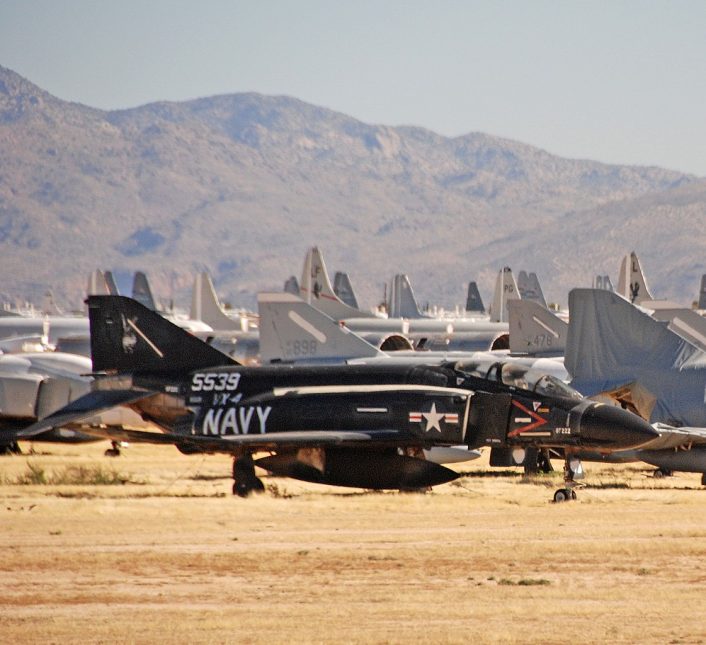
Bunny Comeback
For 36 years, a black F-4 Phantom sat in the blistering Arizona sun wearing a distinctive bunny emblem on its tail. Flown to and placed at the AMARC (Aerospace Maintenance and Regeneration Center), now known as the 309th Aerospace Maintenance Group (AMARG), at Davis-Monthan Air Force Base near Tucson, on May 2, 1986, it was the aircraft’s last flight.
Previously flying with VX-4, the Phantom 155539 would be the last fully intact F-4 sporting the “Black Bunny” livery as it sat in outside storage falling into disrepair. Originally built as an F-4J, it was converted to an F-4S after a lengthy service period with the Navy, serving on several carriers as well as being assigned to several land bases. In 1981 the aircraft was handed over to VX-4 at NAS Point Mugu, CA. In 1982 it received the famous “Black Bunny” paint job and became “Vandy 1.”
In 2016, Castle Air Museum began working to move the jet to the museum in Atwater, CA for restoration and eventual display, collecting donations to assist with the move. In 2022, the F-4 was moved to the Pima Air and Space Museum for outside storage. In July of 2023 funds became available to move the aircraft on to Castle Air Museum. The iconic aircraft arrived on July 28 and is currently in the restoration hangar. Plans are to restore it to static display condition in “Black Bunny” colors and markings.
